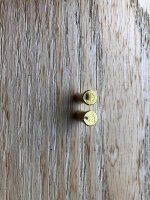tonykharper
Well-known member
Jeff has put up two videos showing case head penetration test recently. I thought readers here would also be interested so I'm putting them here.
https://youtu.be/yBXQ2mTbreY
https://youtu.be/rbjdW6pCZb4
These tests are both for Pin Around Spring (PAS actions). The new Nitro and the Di Orio Turbo V3 action.
As many of you know Calfee and others have been doing these test for 13 years or more.
I don't think anyone has proven beyond a shadow of doubt that doing well on this test automatically means a better shooting rifle or a more accurate outcome.
But this test is another tool in the box, to judge the ignition an action is delivering. From the results decisions can be made as to pin shape, footprint sizes, springs strengths, use of spring spacers, and trigger hangar adjustment.
It is important to note these two tests were not an apples-to-apples test. One action is driving a chisel shaped firing pin and the other a crescent shaped pin. See pic below.
The crescent pin normally has a larger surface area and is therefore harder to drive.
Having done many of these tests myself I was impressed with both actions.
But from experience results like this normally goes away with time. Especially, if you use new springs for the test.
There has been more than one occasion I set ignition and within days to weeks later, found my set up was not delivering as it had done before. Then, adjustments had to be made.
Thank you, Jeff Patterson. I hope you have piqued the interest of others to do their own tests.

TKH
https://youtu.be/yBXQ2mTbreY
https://youtu.be/rbjdW6pCZb4
These tests are both for Pin Around Spring (PAS actions). The new Nitro and the Di Orio Turbo V3 action.
As many of you know Calfee and others have been doing these test for 13 years or more.
I don't think anyone has proven beyond a shadow of doubt that doing well on this test automatically means a better shooting rifle or a more accurate outcome.
But this test is another tool in the box, to judge the ignition an action is delivering. From the results decisions can be made as to pin shape, footprint sizes, springs strengths, use of spring spacers, and trigger hangar adjustment.
It is important to note these two tests were not an apples-to-apples test. One action is driving a chisel shaped firing pin and the other a crescent shaped pin. See pic below.
The crescent pin normally has a larger surface area and is therefore harder to drive.
Having done many of these tests myself I was impressed with both actions.
But from experience results like this normally goes away with time. Especially, if you use new springs for the test.
There has been more than one occasion I set ignition and within days to weeks later, found my set up was not delivering as it had done before. Then, adjustments had to be made.
Thank you, Jeff Patterson. I hope you have piqued the interest of others to do their own tests.

TKH
Last edited:

